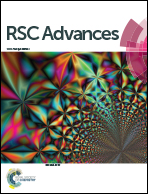Changes in the enzyme-induced release of bitter peptides from wheat gluten hydrolysates
Abstract
Extraction of wheat gluten hydrolysates prepared using Proteax with isobutyl alcohol has opened a new avenue for exploring the release characteristics of bitter peptides. This report contains the first search for suitable extraction conditions for bitter peptides and the first summation of the changes in the enzyme-induced release of bitter peptides as the hydrolysis progresses. Effects of the amino acid sequence, amino acid composition and molecular weight distribution on the bitterness intensity of the isobutyl alcohol extracts are discussed. The results show that the amino acid composition and molecular weight distribution had a more significant impact on the bitterness intensity. Bitter peptides that had a higher proportion of bitter amino acids were gradually released within the first 2 h of the hydrolysis reaction, then the content of long-chain bitter peptides gradually reduced, so the bitterness intensity increased first and then decreased. It was found that the peptide fraction ranging 500–1000 Da had the strongest bitter taste, which could be further hydrolyzed for scientific production of small peptide powders.


 Please wait while we load your content...
Please wait while we load your content...